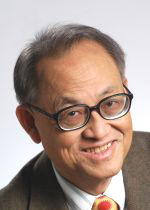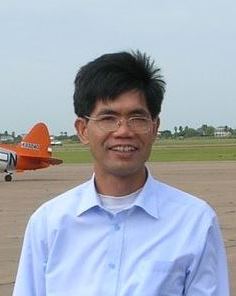Keynotes

University of California at Berkeley, USA
Leon Chua is widely known for his invention of the Memristor and the Chua’s Circuit. His research has been recognized internationally through numerous major awards, including 16 honorary doctorates from major universities in Europe and Japan, and 7 USA patents. He was elected as Fellow of IEEE in 1974, a foreign member of the European Academy of Sciences (Academia Europea) in 1997, a foreign member of the Hungarian Academy of Sciences in 2007, and an honorary fellow of the Institute of Advanced Study at the Technical University of Munich, Germany in 2012. He was honored with many major prizes, including the Frederick Emmons Award in 1974, the IEEE Neural Network Pioneer Award in 2000, the first IEEE Gustav Kirchhoff Award in 2005, the International Francqui Chair (Belgium) in 2006, the Guggenheim Fellow award in 2010, Leverhulme Professor Award (United Kingdom) during 2010-2011, and the EU Marie curie Fellow award, 2013.
Abstract:
Luminaries such as Boltzmann, Schrodinger, Turing, Prigogine, Smale, etc., have searched in vain for a missing principle of complexity that could explain self-organization, intelligence, and life itself. This talk presents a definitive mathematical solution, dubbed local activity, to this age-old enigma. Local activity is the long-sought holy grail of complexity, the elan vital of life!
In high-tech parlance, the principle of local activity asserts that no computers, smart phones, brain-like machines etc., can be built without using locally-active building blocks. In spite of its deep mathematical proof, a simple sophomore-level algorithm is available for testing whether a device is locally active, as well as for massaging the device’s parameters into a Goldilock’s zone of local activity.
Local activity is a necessary but not sufficient condition for complexity. To build a brain-like machine, and ultimately to create life itself, an enabling building block, dubbed the memristor, must be commissioned. Together, local activity, and the memristor, are sufficient to build a universal Turing machine, including a humble but no less potent cellular automata with the endearing moniker 137.
Details of this lecture can be seen and heard in the HPE Chua Lecture series, held in Palo Alto, Fall 2015:
https://www.hpematter.com/event/chua-lectures-first-12-part-series-hp-labs

Zhongshan (Sun Yat-Sen) University
Yu Huang received his B.S. and M.S. from Zhongshan (Sun Yat-Sen) University, Guangzhou, P. R. China, in 1983 and 1986, respectively, and Ph.D. from the Chinese University of Hong Kong in 1995. Since 1986, he has been a faculty member with the Department of Mathematics, Zhongshan (Sun Yat-Sen) University, and currently he is a professor. Dr. Huang is an associate editor of Journal of Mathematical Analysis and Applications. His research interests include dynamical system theory and control of hybrid systems.
Abstract:
It is well known that one-dimensional wave equations with van der Pol boundary conditions can have very complexity behaviors when some parameters in the system enter into some region. In this talk, we shall characterize their chaotic oscillations mathematically by several different approaches, including the growth rate of total variations of the solutions with respect to the space variables, Devaney’s chaos and Auslander-Yorke chaos etc. Some applications will also be presented.

University of California, Riverside, USA
Educated in China, B. Larry Li is Professor of Ecology and Directors of International Center for Ecology and Sustainability, and U.S. Department of Agriculture-China MOST Joint Research Center for AgroEcology and Sustainability at University of California-Riverside with a broad interdisciplinary background and experience in mathematical, statistical and computational modeling applications in ecological studies. He published more than 200 refereed journal articles, 30 book chapters and proceedings papers, and 8 books or edited special issues. Among his many honors and awards, he was elected to be Honorary Professor of Scientific Council of Russian Academy of Sciences (2005), IHE Fellow (1988), AAAS Fellow (2006), DeTao Master, and received 2015 Prigogine Gold Medal. He is also Founding Editor-in-Chief of two international journals: Ecological Complexity (Elsevier) and Journal of Arid Land (Springer). He chaired and co-chaired the successful Beijing Eco Summit 2007 and Eco Summit 2012, Columbus, Ohio. He now presides EcoSummit Foundation.
Abstract:
Life is based on cycling of matter and consumption of energy. The spatial and temporal scales of these processes transcend from the micro-world, where living cells meet their energetic demand with nutrients diffusing through the cell wall, to the planetary scale, where continental vegetation cover and oceanic biota profoundly impact the global cycles of life essentials like water and carbon. My research has been focusing on addressing the following key questions: How do biological and ecological systems self-organize? What are the origins and mechanisms of emergence of scaling from individual to landscape levels (especially on emergence of dynamic scaling)? And what are the physical bases of non-equilibrium biological and ecological systems? I use mathematical, statistical, and computational modeling approaches as a way of exploring and answering these questions. These modeling approaches help identify general principles and basic mechanisms governing emerging properties of biological and ecological systems at multiple temporal and spatial scales based on energetic, thermodynamic and information considerations and allow us to have better understanding and modeling of ecological complexity, services and sustainability. In this talk, I will focus on the applications of chaos and fractal theories to ecosystem complexity and sustainability, especially in spatio-temporal chaotic pattern formations in multiple species interactions including human diseases.













